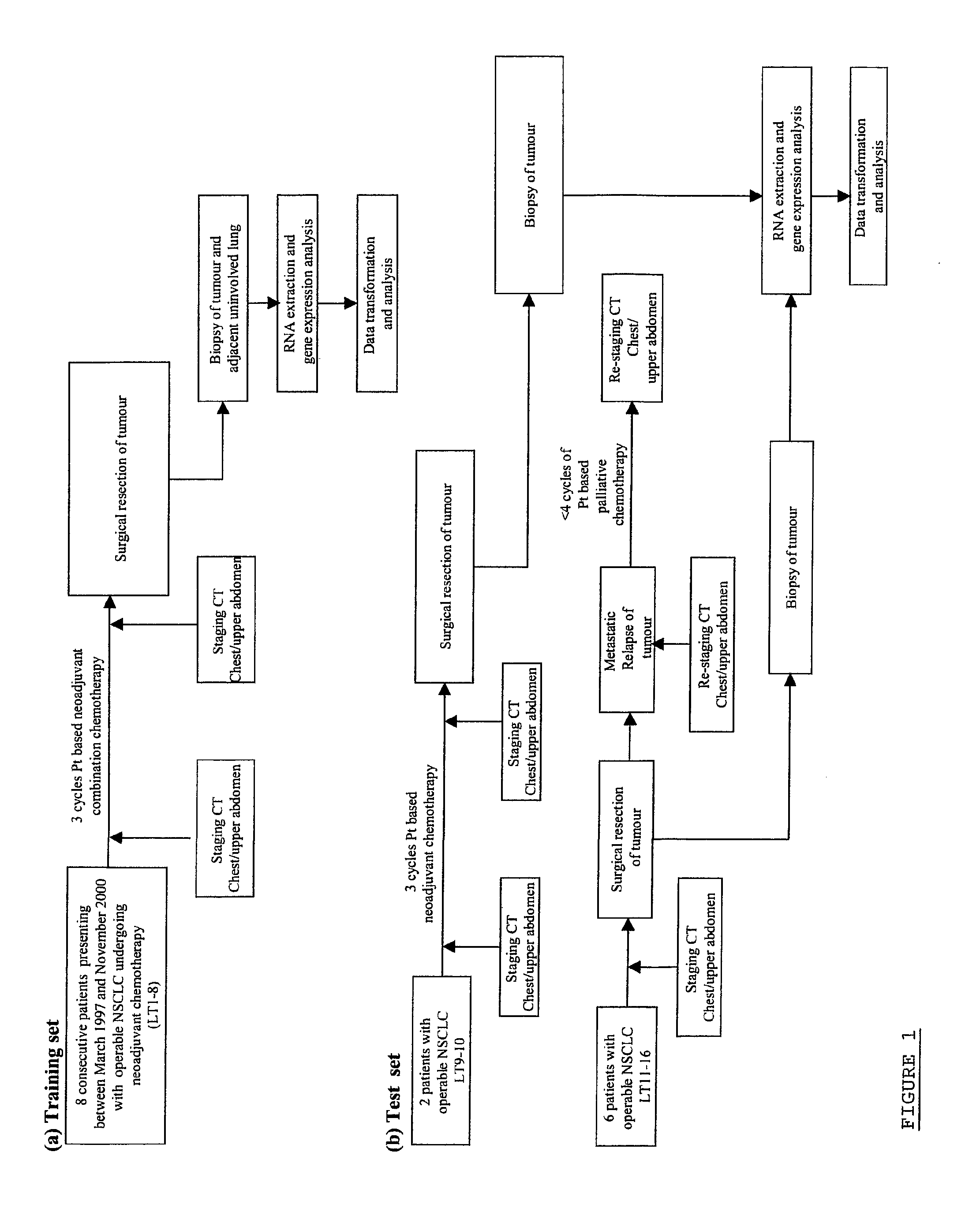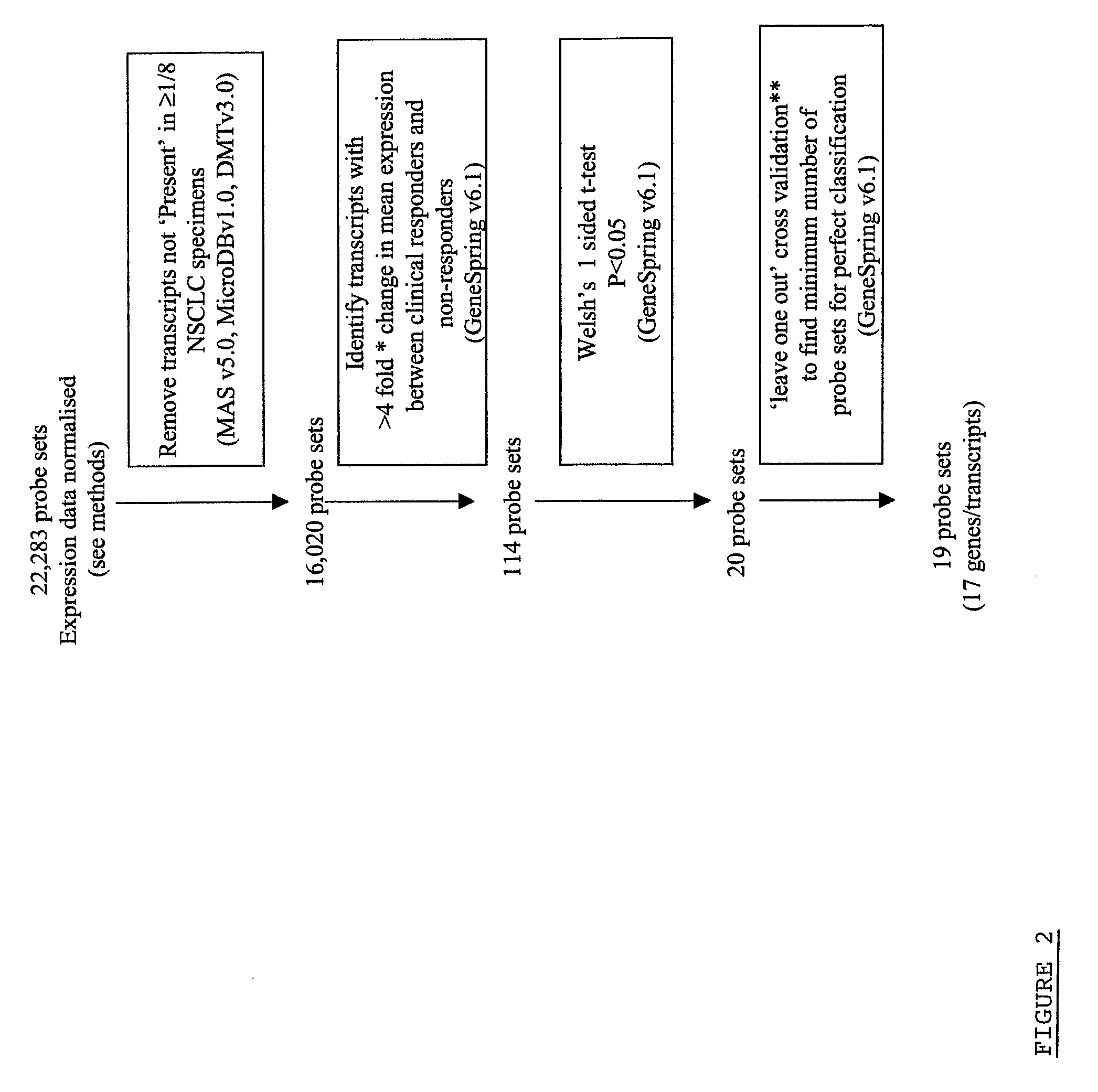Cancer therapy prognosis and target
a cancer and prognosis technology, applied in the field of gene and/or protein expression based methods, can solve the problems of difficult to accurately quantify the proportion of cells expressing serpin b3, complex and heterogeneous mechanisms of these mechanisms, and poor candidate patients for response to chemotherapy
- Summary
- Abstract
- Description
- Claims
- Application Information
AI Technical Summary
Benefits of technology
Problems solved by technology
Method used
Image
Examples
example 2
[0117]Immunohistochemical Analysis of Lysosomal Cysteine Protease Inhibitors. To confirm the importance of the lysosomal protease inhibitors identified from the gene expression profiling studies, the protein expression of three proteins was investigated using IHC: Serpin B3 and Cystatin C, both correlated with response in the gene expression profiling studies and Cathepsin B, the major lysosomal protease target of Cystatin C, which has a documented role in PCD32-34. These proteins were evaluated in patients treated with PBC. This set included pre-chemotherapy tumour tissues from 36 patients (Table 5a) and post-chemotherapy tumour tissues from 13 patients (Table 5b), and includes patients with different stages of disease (I-IV), histological subtypes (adenocarcinomas and squamous cell carcinomas), and platinum based combination chemotherapy regimens. No clinicopathological variable was significantly different between response groups (FIGS. 5a and b).
[0118]Scoring systems were derived...
example 3
[0121]Immunohistochemical investigation of SerpinB3 in chemotherapy-naive NSCLC patients. To investigate the role of Serpin B3 in NSCLC pathogenesis and prognosis we examined its expression by immunohistochemistry in 176 lung squamous cell carcinomas (tissue microarray with 193 tumours, 17 cores lost during staining procedure (8.8%), leaving 176 tumours for evaluation, see methods) and 75 stage, age and grade matched adenocarcinomas (clinicopathological details provided in table 7). Matched primary tumour and tumour containing regional lymph nodes were available for 64 patients (SCC n=29 and AC n=35). No patients received treatment with chemotherapy at any stage of their management thereby allowing an assessment of the purely prognostic impact of Serpin B3, independent of any effects of therapy.
[0122]Overall Serpin B3 staining was more commonly positive in SCC than AC (p<0.0001, table 8). There was no significant association between Serpin B3 protein expression and any clinicopathol...
PUM
 Login to View More
Login to View More Abstract
Description
Claims
Application Information
 Login to View More
Login to View More - R&D
- Intellectual Property
- Life Sciences
- Materials
- Tech Scout
- Unparalleled Data Quality
- Higher Quality Content
- 60% Fewer Hallucinations
Browse by: Latest US Patents, China's latest patents, Technical Efficacy Thesaurus, Application Domain, Technology Topic, Popular Technical Reports.
© 2025 PatSnap. All rights reserved.Legal|Privacy policy|Modern Slavery Act Transparency Statement|Sitemap|About US| Contact US: help@patsnap.com



